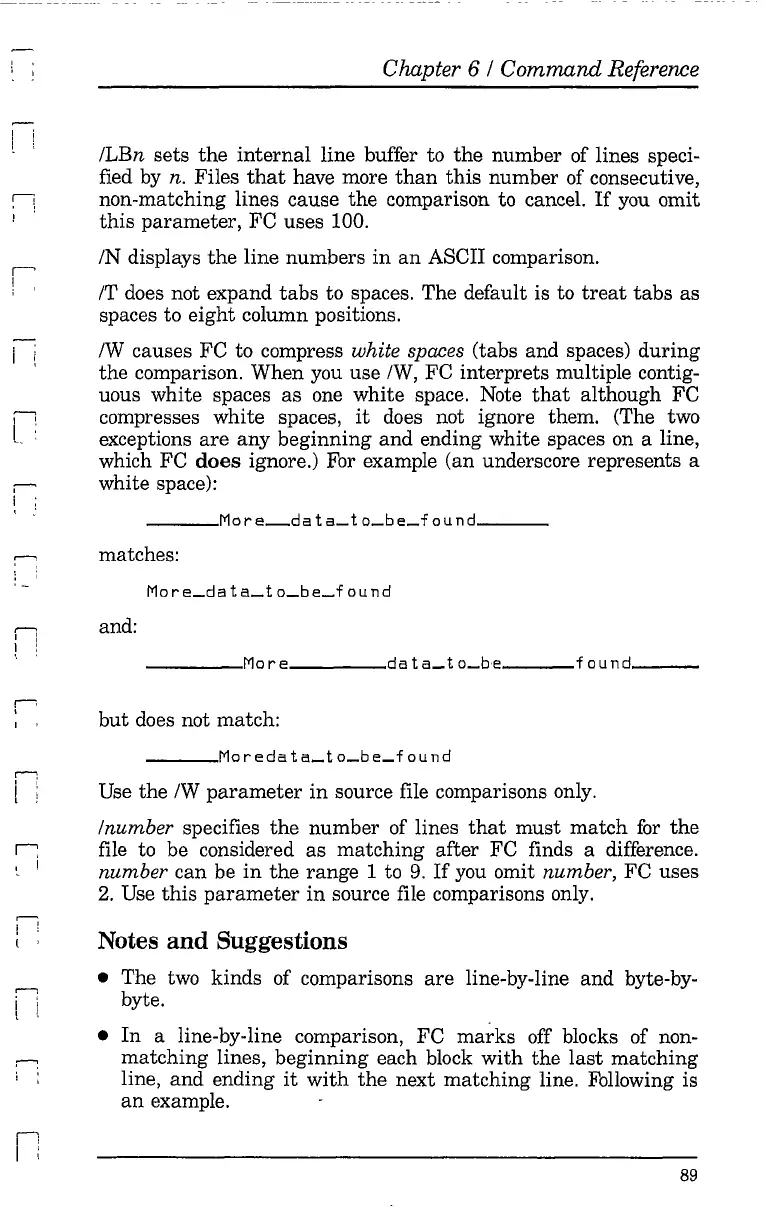, ,
; I
l ;
!"\
! '
i i
,.-..,
I '
L :
n
!,
:
I '
r-"i
i :
l ,
~
, I
.--
i !
l '
.---,
i \
t \
n
I :
Chapter 6 / Command Reference
ILBn sets
the
internal
line buffer to
the
number of lines speci-
fied
by
n.
Files
that
have more
than
this
number of consecutive,
non-matching lines cause
the
comparison to cancel.
If
you omit
this
parameter, FC uses 100.
IN displays
the
line numbers
in
an
ASCII comparison.
IT does not expand
tabs
to spaces. The default is to
treat
tabs
as
spaces to eight column positions.
IW causes FC to compress white spaces (tabs and spaces) during
the
comparison. When you use
IW,
FC interprets multiple contig-
uous white spaces
as
one white space. Note
that
although FC
compresses white spaces,
it
does not ignore them. (The two
exceptions
are
any beginning and ending white spaces
on
a line,
which FC
does ignore.) For example (an underscore represents a
white space):
______
More
__
data_to_be_found
__
matches:
and:
________
Mo
r e
da
t
a_
t
o_be
f 0 und _
but
does not match:
______
Moredata_to_be_found
Use the
IW
parameter
in
source file comparisons only.
Inumber specifies
the
number of lines
that
must
match
for
the
file to be considered
as
matching after FC finds a difference.
number can be
in
the
range 1 to
9.
If
you omit number, FC uses
2.
Use
this
parameter
in
source file comparisons only.
Notes and Suggestions
• The two kinds of comparisons
are
line-by-line and byte-by-
byte.
•
In
a line-by-line comparison, FC
marks
off blocks of non-
matching lines, beginning each block
with
the
last
matching
line, and ending
it
with
the
next matching line. Following is
an
example.
89
